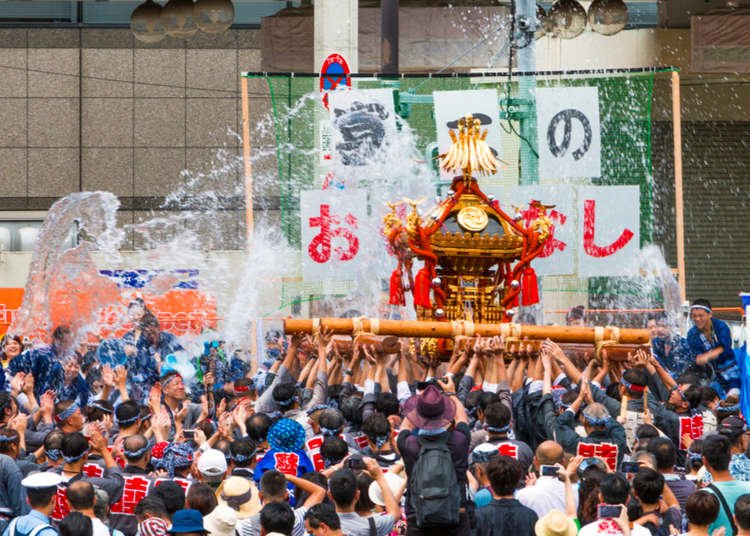
What do you think of when you hear the words "summer in Japan"? There are many seasonal things that Japan is famous for: fireworks, festivals, and beachside clubhouses where you can try fantastic Japanese street foods. But there is another feature you can't avoid during your stay: the weather. In fact, it can often get breathlessly hot due to humidity!
Despite the country’s technological advancement, summer traditions that have a history going back hundreds of years are also still prevalent in Japan. And in many cases, these connect with each of the 5 senses. Let’s take a look at 5 unique and traditional ways that the Japanese use to keep cool in the summer!
How Japanese connect with the senses in summer
As a Japanese writer, I personally know how folks in our country tend to connect seasons with senses, nature, and tradition, however it’s sometimes difficult to really put a finger on why that might be. So to get an idea, I asked two other natives how they felt.
"We are very good at picking up tiny features such as the coolness from sound, sight, smell, etc., and that's why we still cherish our traditional ways of keeping cool," notes Ryotaro, a Japanese man in his 70s. "I believe one of the reasons for this is our religion: Shintoism, which sees spirits in both nature and objects. Consciously or subconsciously, many Japanese believe in the power of these things. Hence, we can feel cool by seeing running water or hearing the sound of a wind chime."
Another person, a Japanese woman in her late 20s, also says, "I presume most Japanese have high sensitivity which stems from our long history as an ethnically homogenous nation. When there is less diversity, people tend to consider the harmony as more important than accepting differences, meaning you need to look around very carefully. I guess that's why the Japanese are so sensitive they can feel cooler from natural stuff."
1. Uchimizu: Spreading water onto the ground
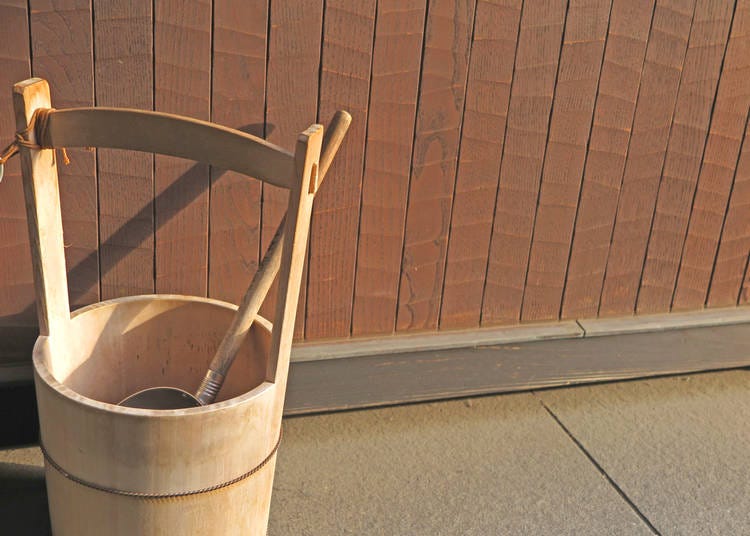
The word uchimizu translates to 'to spread the water.' It's usually done on the street or in front of a house/building, and was initially done using a hishaku (a ladle-looking-wooden-spoon) and oke (a wooden bucket), though a plastic bucket or a hose is far more common nowadays.
It is believed that to see water and to wet the ground makes the body cool down, and the sound of water splashing on the ground also brings coolness. Furthermore, apart from this belief, there is also the fact that the by pouring water onto the hot ground will cool the air by around 2 degrees Celsius, due to the vaporization effect. The idea of uchimizu is also used for a home appliance ‘rei-hu-ki', which is a kind of air conditioner in which air is blown through dripping water, cooling it off and using less energy.
Back to the time when the streets were not paved, uchimizu was a kindness for neighbors and a part of greeting guests because it not only cools things down, but it also prevents dust clouds. And this culture gradually faded away in developed cities due to the contribution of both air conditioners and well-paved streets. However, in recent times people began appreciating uchimizu once again, as they realized the environmental benefit we can derive from it at a time when global warming is a crucial problem, plus greywater can be used for it too.
For these reasons, there is a project today in Tokyo to spread and penetrate the idea of uchimizu again, and the project boosted uchimizu events. If you happen to run across it during your Japan visit, not give it a go too?
2. Furin: Japanese wind chimes
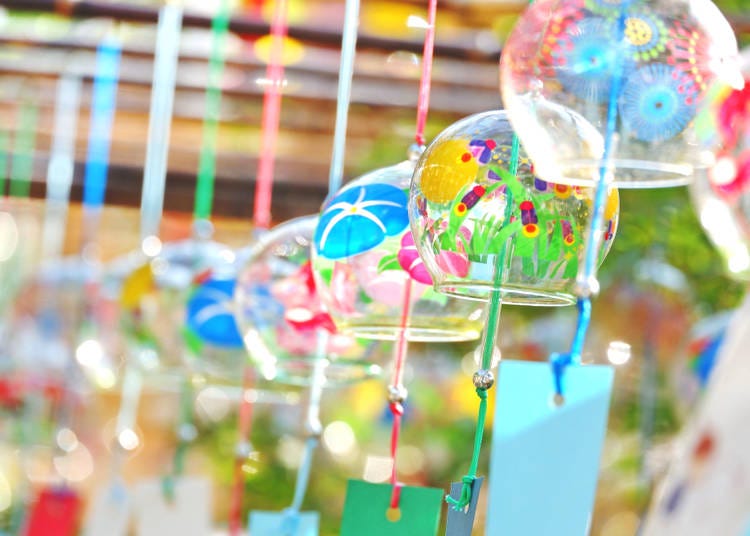
Typically made from glass or iron, furin is a wind chime. In older times, it used to be believed that its sound wards away evil spirits. But then, the meaning of putting it up gradually changed, and these days Japanese enjoy the sound of furin basically only during summer – its soothing sound somehow making us feel cool.
Apart from its beautiful, delicate sound, its decorative appearance is also refreshing to eyes, and when a breeze blows, the strip of paper or cloth attached to the chime sways about, making them kind of fun to look at in those restless summer moments.
Now when you go around Japan, you might notice a difference in the tone when you hear several furin are ringing. Simply put, the material they’re made of, changes the sound. Generally speaking, iron makes a clearer and long-lasting sound, while glass makes lighter and repetitive sounds. And, of course, the thickness and purity of material affect its sound as well: thin glass produces a longer and higher tone, while thick glass produces a low, solid tone.
This part of Japanese culture being quite old, there are several renowned kinds of furin. One of the most famous is Edo furin. Made of glass, it’s painted with a picture which symbolizes Japanese summer, such as goldfish, fireworks, or morning glories, and often sold at a reasonable price. As you see its name Edo ( old name of Tokyo), this is Tokyo's local traditional craft. Thus it would be a lovely souvenir or a gift for your family/friends!
There are several furin markets held at temples/shrines in Tokyo and Kanto area every summer where you can see and buy them. And if you, unfortunately, miss these events out, don't be disappointed as nearly all of the department stores also sell them.
Here below is one of the furin markets that are open until 8th September. It's located in Saitama Prefecture where you can go by train and bus from Tokyo Station, taking 90 minutes.
-

-
Address
2-11-3 Miyashitamachi, Kawagoe City, Saitama Prefecture, 350-0052
View Map -
Nearest Station
Kawagoe Station (JR Kawagoe Line / Tobu Tojo Line)
10 minutes by bus
- Phone Number 049-224-0589
-
Address
2-11-3 Miyashitamachi, Kawagoe City, Saitama Prefecture, 350-0052
3. Special Summer Foods: Kakigori (Japanese shaved ice), Japanese curry, and hot green tea
Kakigori is a cup of shaved ice with flavored syrup. A favorite summer dessert among the Japanese, it really refreshes your body. It is not tough at all to find a place where they have kakigori, as most cafes and restaurants start serving it once the weather turns hotter.
This treat is believed to have already existed more than 1,000 years ago, as it shows up in ‘The Pillow Book (Makura-no-Shoshi)' written by Sei Shonagon, which was completed around the year 1001. When it was first developed, it was served with a honey-like syrup, then the topping changed to sugar, molasses, and anko (red bean paste) which are still eaten today. There are also ‘kakigori syrups’ that come in a number of flavors, like strawberry, lemon, melon, and matcha, and you can order these up at any stand.
Now that we live in the social media age, the food culture around kakigori is changing: many shops have started competing for photo-perfect appearance and outstanding taste to get the right images down for Instagram and in review sites. Nowadays, kakigori is a joy for your taste-buds and eyes alike!
So one curious thing is that after eating something cold, your body temperature will likely rise to compensate. Interestingly, because of this Japanese also do the opposite: that is to say, people will drink something hot, like green tea, or to eat spicy food, like Japanese curry, in order to encourage sweating. In fact, many Japanese regard summer as the season for curry (and other spicy foods as well), and it is one of the most popular dishes among both kids and adults.
Japanese curry is actually quite different from the original curry of India. Without getting too involved (you can check out <@this article here on Japanese curry|a=article:a0001672/@>), it is thicker and less spicy (but still hot) than Indian curry, and there is a wide choice of ingredients such as pork, beef, chicken, seafood, vegetables and even Japanese croquette. You’ll be able to find it on the menu at most restaurants, even ramen or soba noodle shops. Give it a try when you’re next in town – see if it’ll cool you down!
4. Horror stories
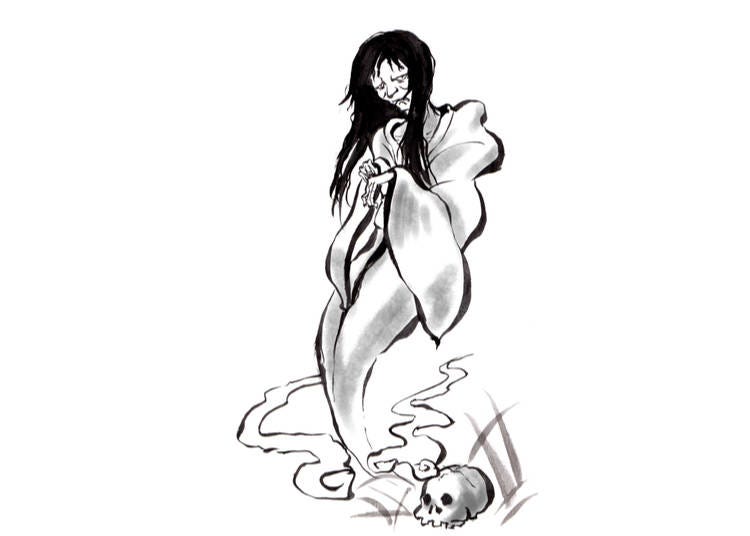
So at first glance, you might be wondering: Halloween comes early in Japan? Well Japanese often enjoy sending shivers down their spines by sharing/listening to a good horror story to overcome the hot, humid nights. (Or sometimes it results in you staying up all night out of fear of the chilling tale!)
There is a unique way to exchange horror stories in Japan, called Hyaku monogatari (100 stories). As you may guess from the name, it’s kind of like telling ghost stories around the campfire: a hundred stories and a hundred candles in a room are prepared, and after finishing a story, you blow the candles, out one by one. As legend has it, once all the stories have been told and all candles have been blown out, an actual ghost will appear in the room!
Now in modern times, this is no longer common, as having to gather a hundred candles is quite problematic, not to mention the hazardous aspect of it. However, there are many horror movies produced every year, so the Japanese sometimes have a horror movie marathon night instead. Also, you'll find at least one or two horror films are released during the summer, and one of these is very likely to be the scariest one released for the whole year!
Another summer horror event, called kimodameshi (test of courage), is also common, especially among children. This is usually held in a forest or a graveyard. They’ll walk through the dark with a flashlight and are generally given tasks to complete before they reach the endpoint. In many cases, adults dress up as ghosts, hide, then pop out and scare the children while making sure they are safe!
As for the grown-ups, in summer there are countless bloodcurdling "Obake-yashiki (haunted houses)" that open their doors at most of Japan’s theme parks. While these are very popular all year round, the best season to try it is the summer as some of them hold a spookier program to cool you down.
5. Yukata (Kimono for summer)
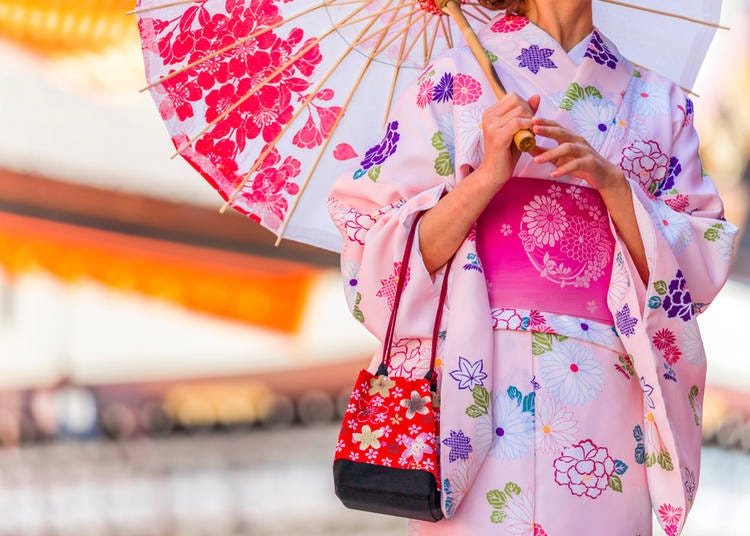
Yukata, one of the most famous Japanese garments, are designed to be worn during the hot summer and are generally made of cotton. Hence, they’re quite light and breathable compared to silk-made kimono. Japanese people also find yukata visually refreshing to see yukata because of their airy ‘tamoto (sleeves)' fluttering in the air.
Now if you’d like to try on a yukata for yourself, you’re in luck! In most touristy areas like Asakusa, Shibuya, Ikebukuro in Tokyo, and Kamakura in Kanagawa, you’ll be able to find shops where you can rent them – and even buy one of your own.
Although they used to be typical clothes for everyday wear, nowadays yukata are often worn just during summer festivals.
6. Festivals!
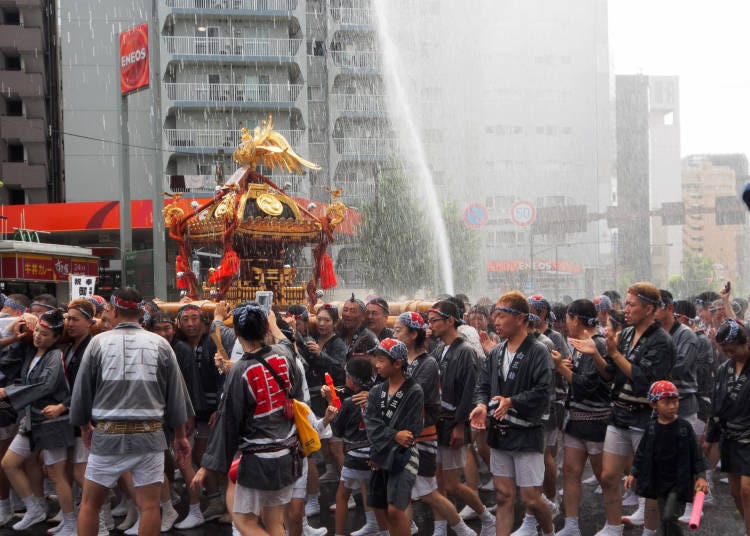
Speaking of which: if you want to immerse yourself in an atmosphere of traditional Japanese summer, visiting a festival is a must. Here you’ll see a lot of people in colorful yukata having fun, and you can even enjoy Japanese matsuri street foods or might have a chance to see people carrying mikoshi (portable shrines) or dancing bon-odori.
One of the biggest summer festivals, which dates back nearly 400 years, the "Fukagawa Hachiman Matsuri (深川八幡祭り)" is held in Tokyo on 11th-15th August. During this must-see experience, water being tossed around to prevent Katsugi-te (those who are carrying Mikoshi) getting overheated and also to prevent evil spirits from coming closer to them.
This is why the festival also known as "Mizukake matsuri (Water splashing festival)." The mikoshi will be paraded around on the 12th. If you want to check it out for yourself, make sure you’re dressed to be wet and head over to Tomioka Hachiman Shrine! It takes only 10 minutes from Otemachi Station to the nearest station, Monzen-Nakacho, via the Tokyo Metro Tozai Line, or 20 minutes from Tokyo Station via the Keiyo Line to Etchujima Station and then a 15-minute walk.
-

-
Address
1-2-3, Tomioka, Koutou-ku, Tokyo, 135-0047
View Map -
Nearest Station
Monzen-Nakacho Station (Tokyo Metro Tozai Line / Toei Oedo Line)
3 minutes on foot
- Phone Number 03-3642-1315
-
Address
1-2-3, Tomioka, Koutou-ku, Tokyo, 135-0047
Once the rainy season finished, the most energetic season will come! So, why don't you prepare yourself to keep cool before exploring the exciting Japanese summer?
Main image credit: Julien Faury-Ramoin / Shutterstock.com
Written by: Nao
- Area
- Category
*Prices and options mentioned are subject to change.
*Unless stated otherwise, all prices include tax.
Popular Tours & Activitiess
Recommended places for you
-

Enjoy Japan's Gorgeous Winter Lights! Ride the Romancecar to Shonan no Hoseki Illumination
by: Guest Contributor
-

2025 Autumn Colors Report: Kurobe Gorge Nearing Peak
by: Timothy Sullivan
-

LaLaport TOKYO-BAY North Building Now Open: Shop, Dine & Enjoy Events at LaLa arena, Just 2 Stops from Disney
by: Wemmy Chau
-
Ad

Walk in the Footsteps of Believers: A 4-Day Pilgrimage Across Goto Islands, Nagasaki Prefecture
by: Yohei Kato
-

Get Ready to Catch 'Em All! First Ever Permanent Outdoor Pokémon Park Opening Near Tokyo!
-

Don't Miss Out! The One Thing You Must Do Before Shopping at Mitsui Shopping Park LaLaport: Get Your Max 10% OFF Coupon Book
-

Hokkaido Lavender Fields: 6 Best Places in Furano to See Japan's Dreamiest Purple Meadows
by: Nobuka Kawashima
-

Let's Explore Hokkaido's Capital! Tourism Ambassador Shares 5-Day Family Trip to Sapporo
-

New in Hokkaido: Walk a Magical Illuminated Path at Jozankei Onsen's Dreamy Light-up Event
by: Cassandra Lord
-

Japan's Bath Culture: Tips You Should Know!
-

6 Surprisingly Cheap Things in Japan
-

Noboribetsu Onsen: 5 Best Things to Do in Japan's Famous Hot Springs Town!
- #best sushi hokkaido
- #things to do hokkaido
- #best ramen sapporo
- #what to bring to japan
- #new years in tokyo
- #what to buy in ameyoko
- #japanese nail trends
- #what to do in odaiba
- #onsen tattoo friendly tokyo
- #daiso
- #best sweets otaru
- #japanese fashion culture
- #best nature furano
- #japanese convenience store snacks
- #best japanese soft drinks























